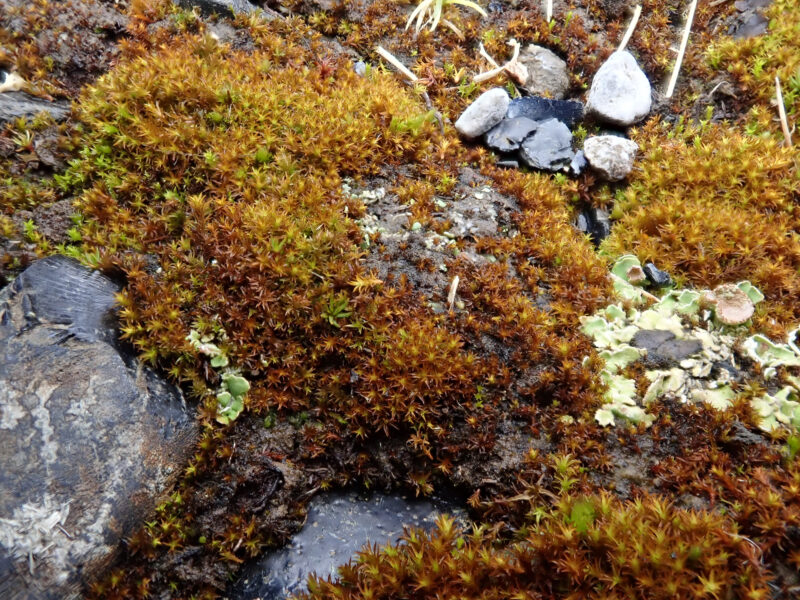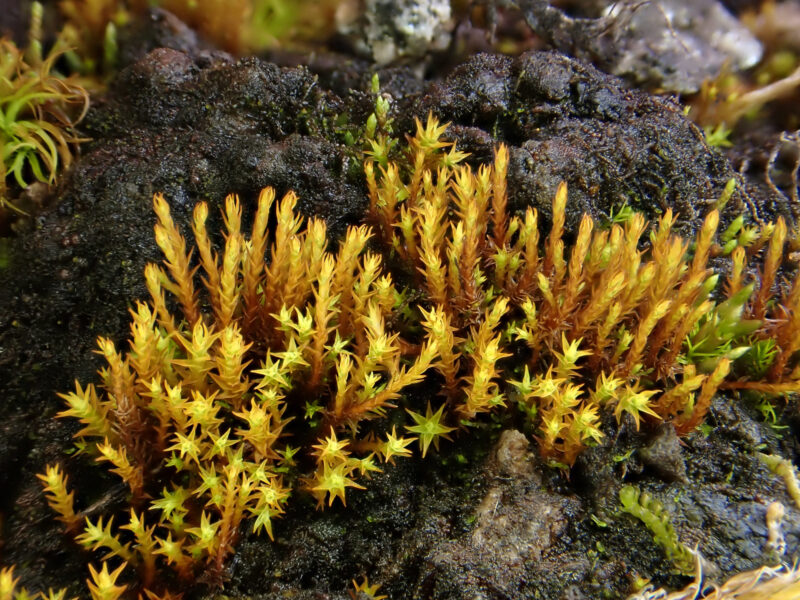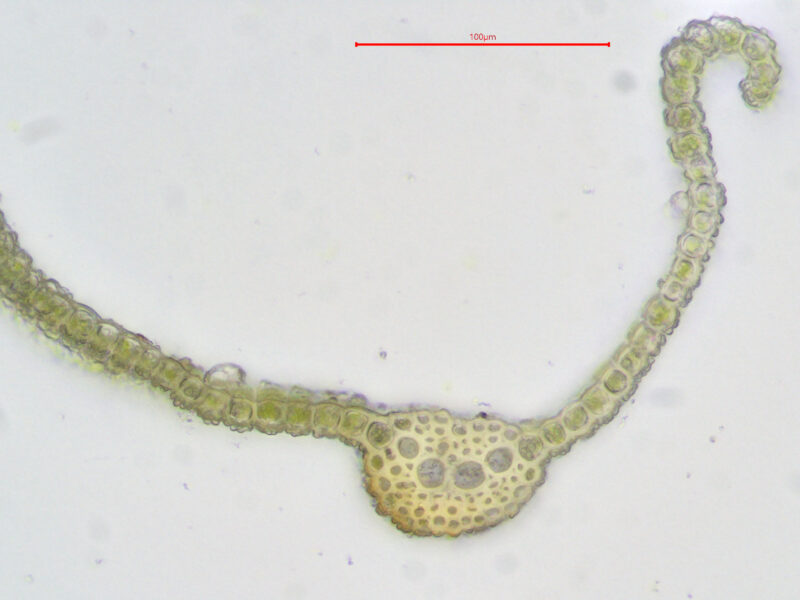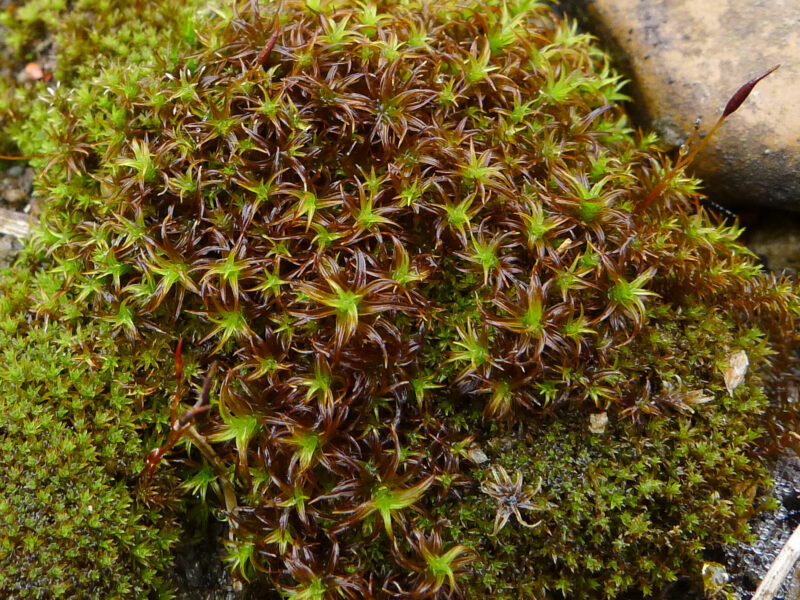Identification notes
This very small moss is readily overlooked, although once it, and its habitats are known, it is relatively easily recognised. In its typical upland, base-rich habitats it may be quite robust. In the field, it has a distinctive though subtle appearance that is rather hard to describe. Its uppermost leaves are pale green giving way to orange to brown leaves below. Its strongly papillose leaf cells scatter the light, making the leaves look opaque and matt and this will help to distinguish it from some similar-looking species.
B. recurvirostrum also often grows in the same places and looks similar, although it is often red-tinted and may have erect capsules held on a long, deep red seta. The most certain way to tell them apart is to check for the bright red, potato-like rhizoidal tubers of B. ferruginascens – best seen under a microscope but with practice these can often be seen in the field with a hand lens.
Read the Field Guide account




















